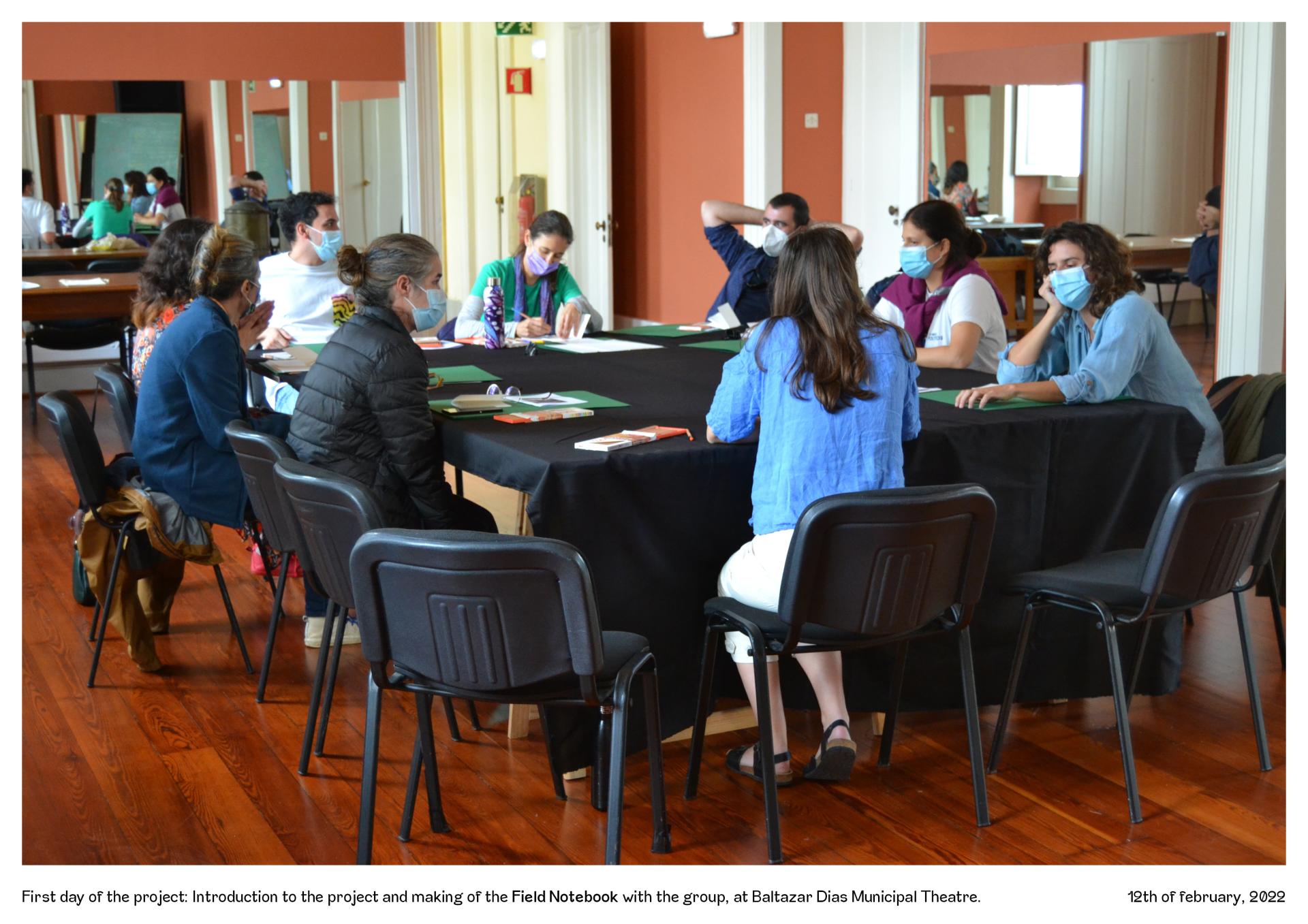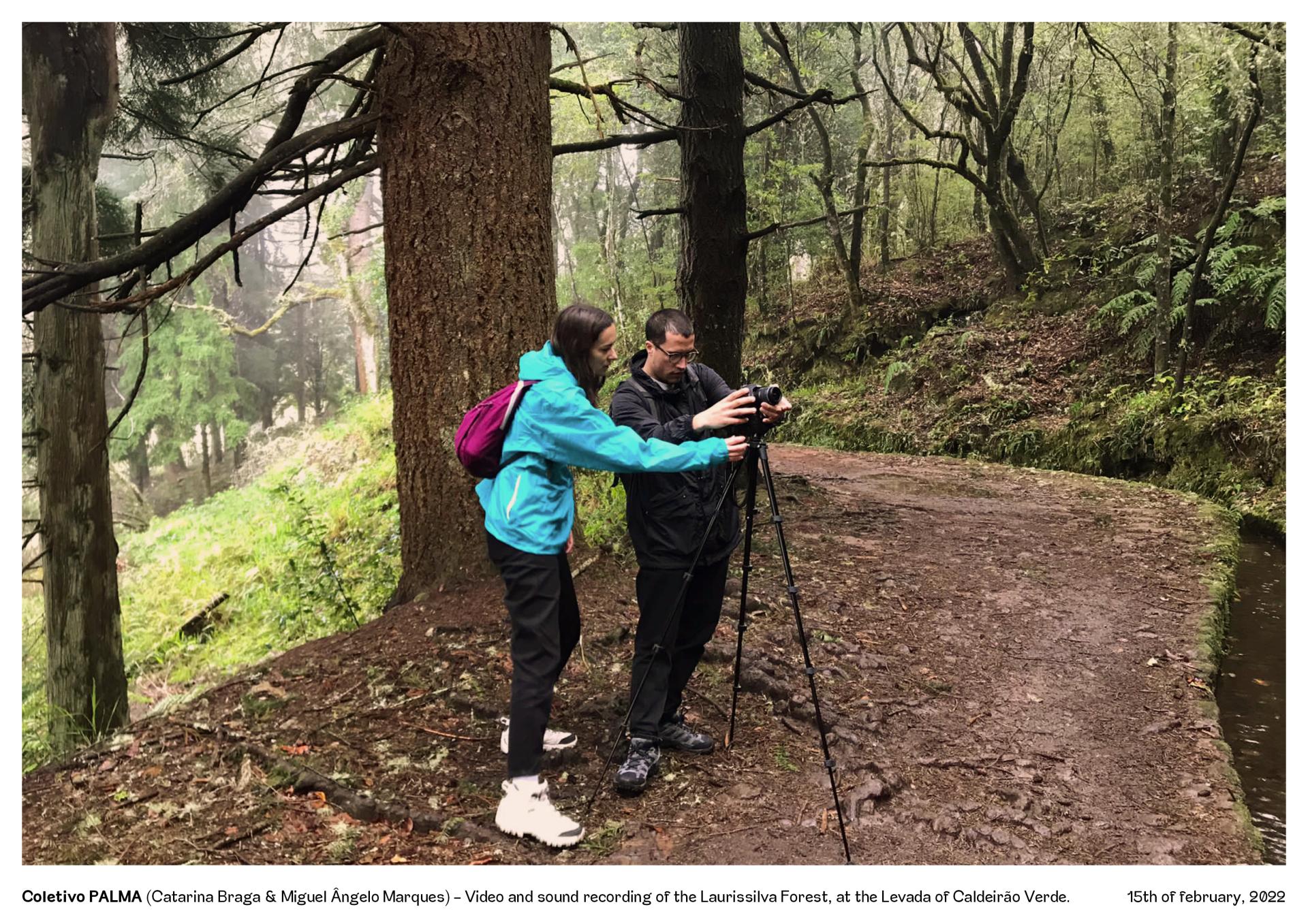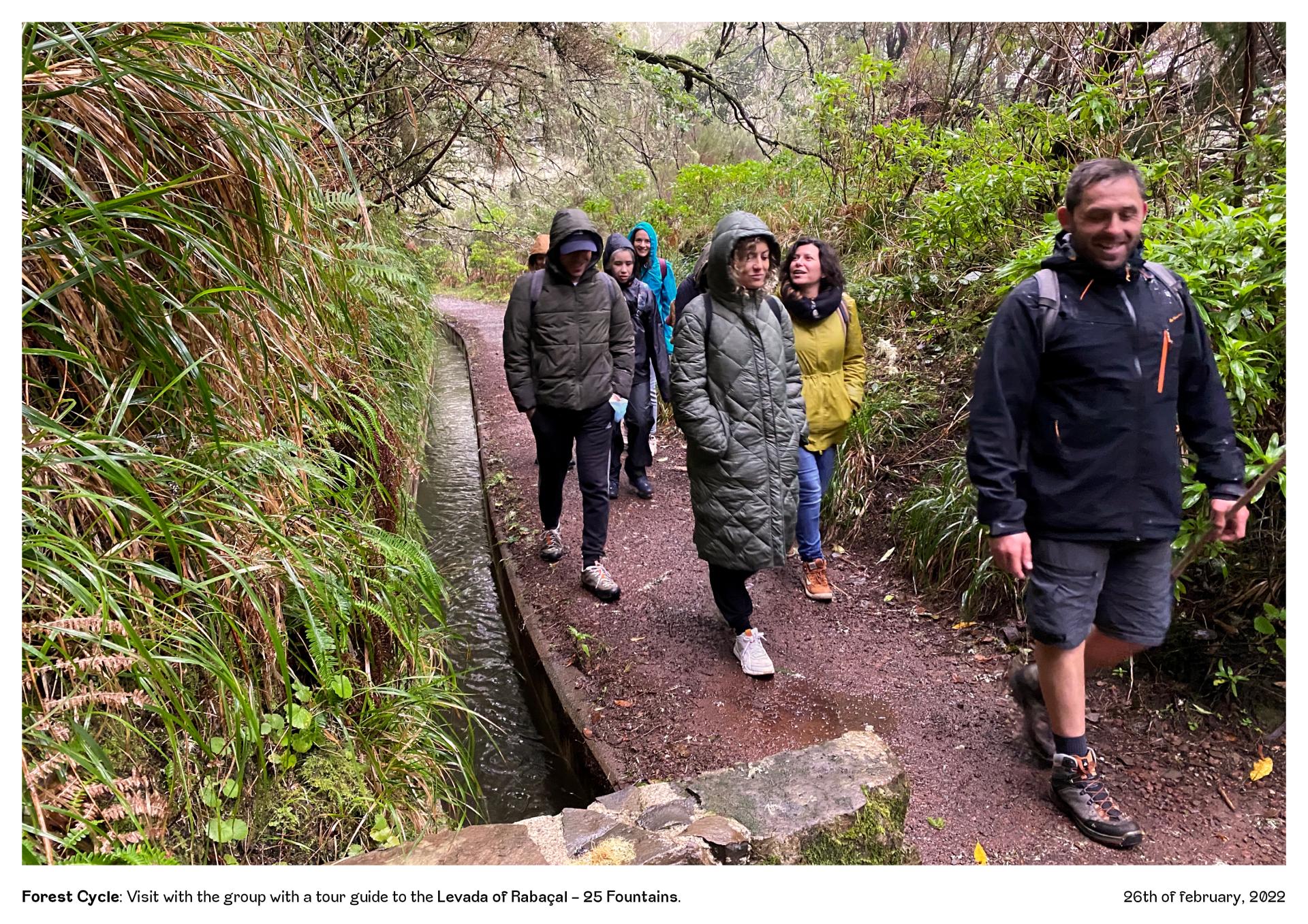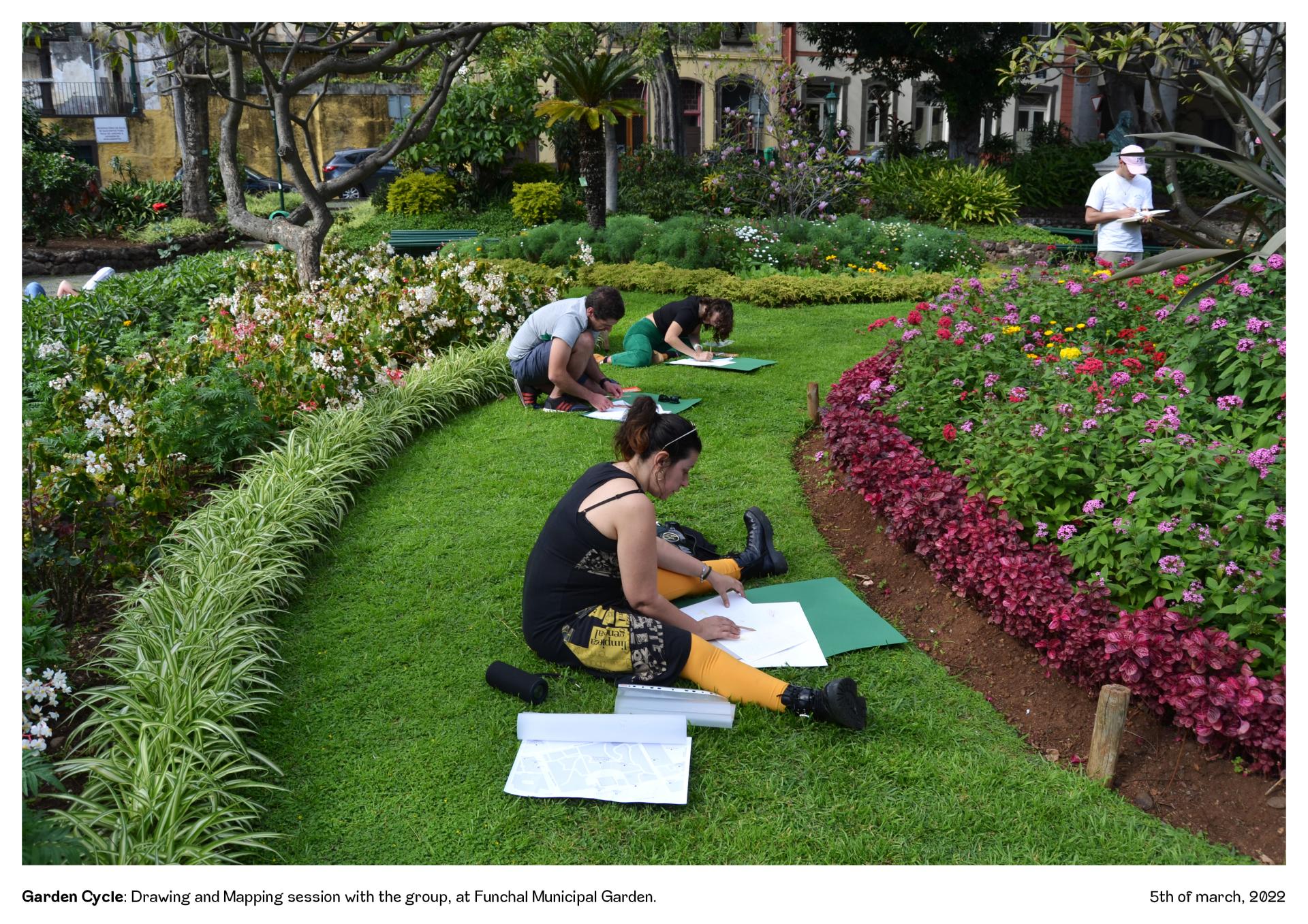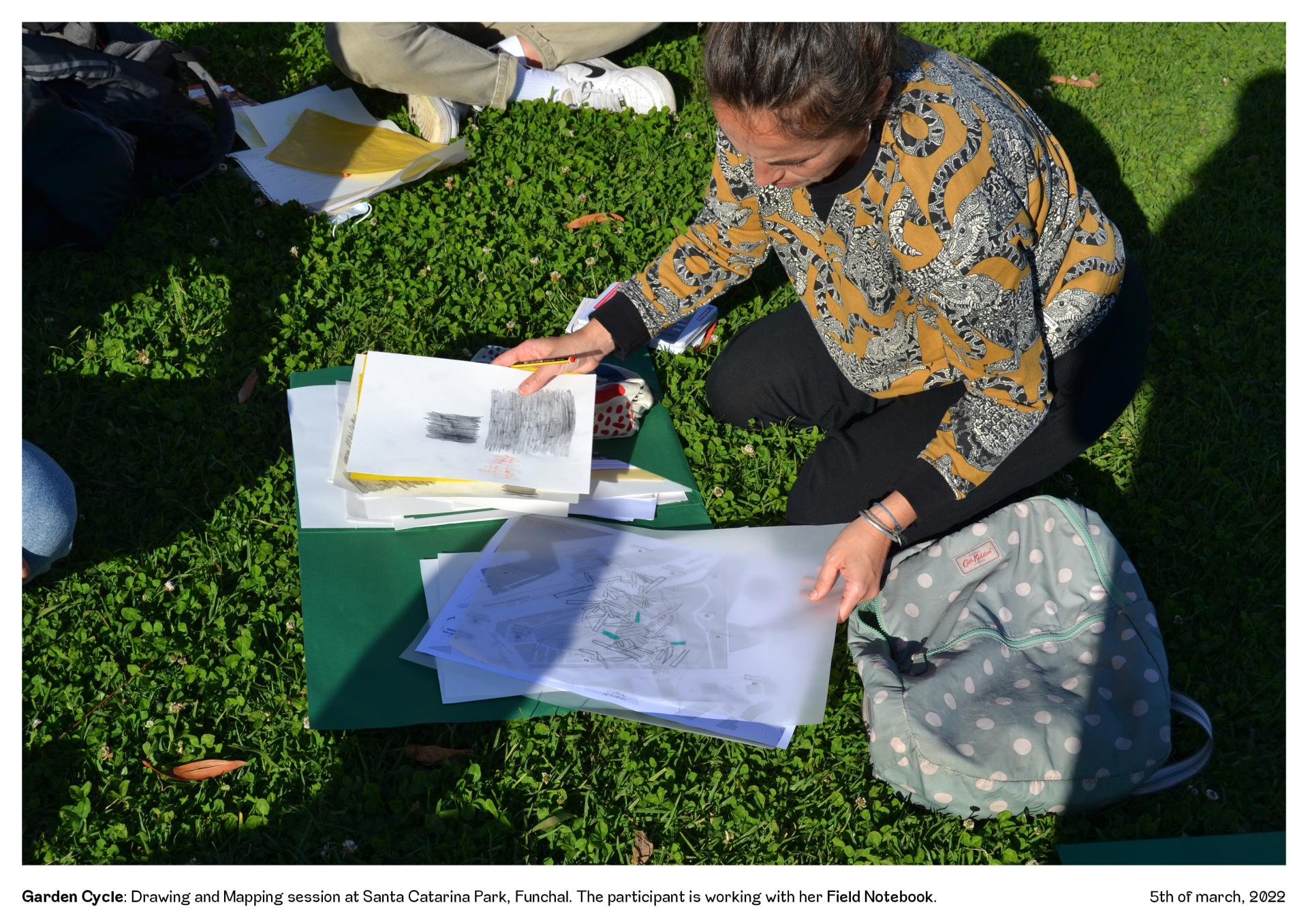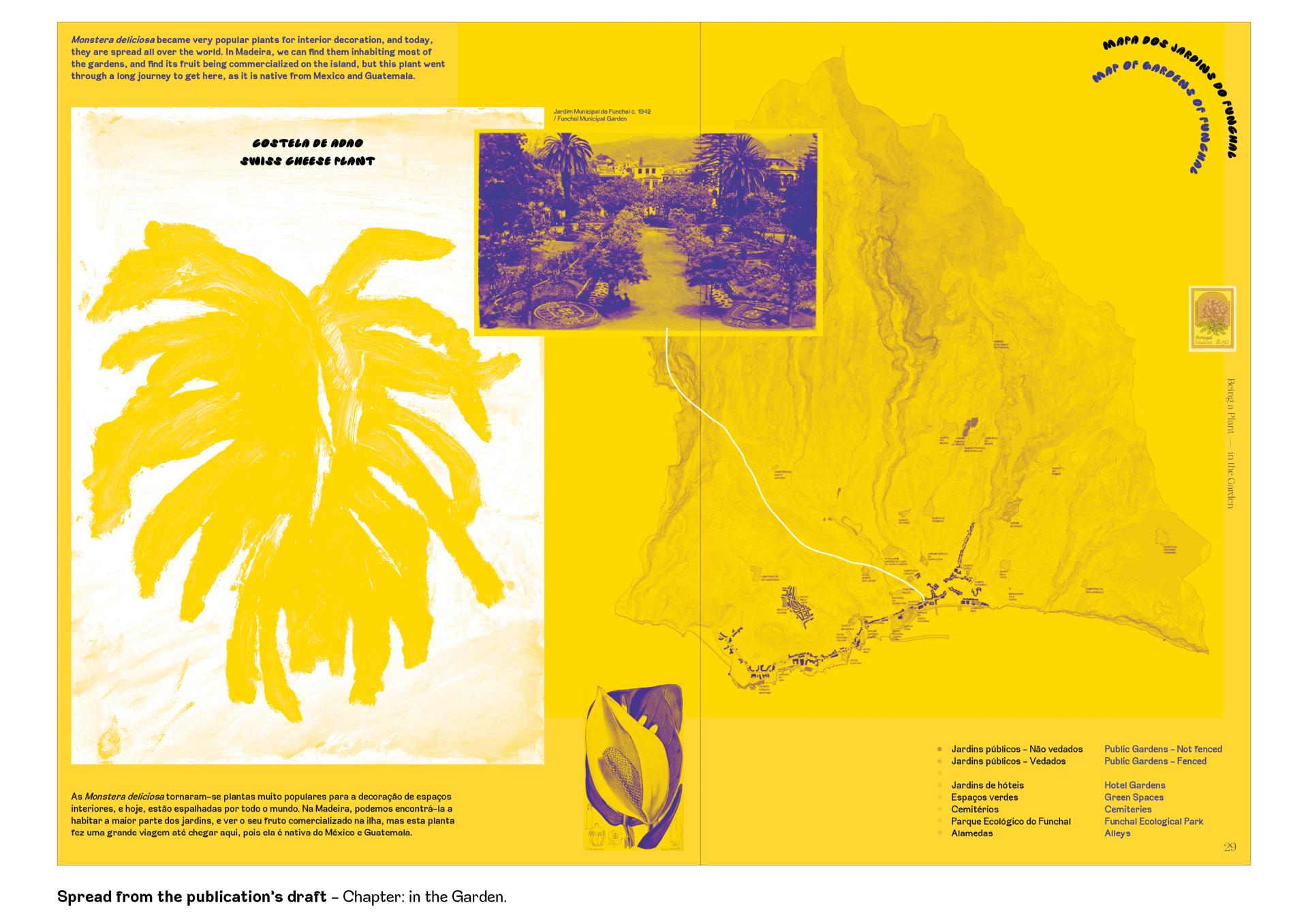Exploratory Cycle: Being a Plant
Basic information
Project Title
Category
Project Description
Exploratory Cycle: Being a Plant is an art project created for Madeira's nature, aiming to bring together citizens, organisations, plant scientists and farmers to engage with the natural spaces of the island. During the 2-month residency, we held a program for 12 residents, made of three cycles: the Forest (Laurisilva), the Gardens and the Urban Vegetable Gardens.Directed towards artistic creation, we built a Field Notebook, made of various papers to draw and think of plants from each ecosystem.
Geographical Scope
Project Region
Urban or rural issues
Physical or other transformations
EU Programme or fund
Which funds
Description of the project
Summary
Natural landscapes are increasingly turning away from what they once were, due to the human being's alteration in their ecosystems. With the intention of trying to remember what this ancestral landscape would be, the first focus of the Exploratory Cycle: Being a Plant involves discovering the network of native plants of the Laurissilva Forest, looking at the endemic Madeiran flora and its unique examples. We intend to remember the origin of all the island's natural biology, raising awareness to its preservation, and also understand the phytosociology evolution of the island. Today more than ever, it is vital in the face of the ecological crisis that we are reminded of the importance of the connection that human beings have with the nature that surrounds them. With the destruction of part of the forest so that new spaces could be created for the establishment of villages and for agricultural plantations, other types of landscape are introduced on the island: the farms and the gardens. With the affirmation of Botany as a fundamental discipline to recognize and study the vegetal landscape, more and more gardens are introduced on the island in the 18th century. These new natural spaces affirm that Madeira has always been a prolific habitat for this type of vegetation due to the ideal climatic conditions, as well as its very rich volcanic soil that makes agricultural practices perfect.
With this project we aim to explore the landscape, through artistic research, to engage in actions with the community towards a greater comprehension of their natural heritage. Using drawing and mapping technics we try to connect the people with the plants and the soil that surround them, creating awareness in a relational way with participatory practices, with an artistic interest in collectivity and direct engagement with the participants. In this sense we create a link between artistic creation and social practices bonded to reconnect us with the natural beings and different species.
Key objectives for sustainability
— This project aims to promote the environmental sustainability of each natural space where it is located, stimulating the relationships between the different ecosystems: from the forest, to the garden, to the vegetable garden, and understand how these are interconnected by the "Levadas" system, a built structure of paths for water - highlighting how the human being is an interdependent actor in this relationship;
— It is proposed to explore the impact of the Laurissilva Forest atmosphere on the plant biodiversity of the rest of the Island, looking at the Madeira flora as a unique example in its genesis, in order to map and chart endemic and autochthonous species of the Island and the Macaronesian region;
— Identifying existing structures which work towards the preservation of endangered species, and other projects that are being developed at the level of botanical research and conservation. So far we have started to work with the botanists at Natural History Museum of Funchal, the Dragon Tree Nucleus, and the Institute for Forests and Natural Conservation;
— Alert the community to a possible lack of perception of the well-being of plants, described by the phenomenon of plant blindness; and stimulate our attention to these beings in their different natural habitats;
— To ensure that the importance of plants' preservation is seen by the local community, our artistic approach will give them the tools to create a bonding relationship with their natural heritage and provide caring and attention throughout their day-to-day life;
— To promote agrobiological practices in the community farm gardens, introducing ideas in sustainability of resources, conscious eco thinking and circular economy, with practices such as composting, and the natural treatment of the soils to reach a healthier and chemicals free way of agriculture in our urban community farm gardens.
— To reconnect with all the plant beings around us in all their diversity.
Key objectives for aesthetics and quality
— To look at the natural spaces of the Laurissilva Forest, city gardens and the community farm gardens as places of artistic creation relevant to understanding the history and phytosociological evolution of the Island, providing the community with tools that come from the artistic expression such as drawing and painting, to give them bases of knowledge and awareness of a more ecological relationship with the world;
— Using contemporary art as a vehicle for critical thinking, engaging the local community on environmental issues;
— Using artistic research as a vehicle to understand our legacy as humans and the impact we can have on the planet; from an increasingly important participatory art to create this new social bonding that brings a common purpose;
— Starting a critical task of educating the population to destigmatize the production of artistic work as a way to allow free expression, by making it more down to earth and democratic - involving the community with art skills that will change their day-to-day life attention, specially in a territory as Madeira, with a great tax of illiteracy;
— To let art be the mediator between groups of people that usually don't have this kind of contact with each other;
— To use an attractive design for the publication in order to captivate different kinds of public as a way to raise awareness about sustainability and the urge to treat and repair our natural spaces;
— The aesthetic objects are an effective way to spread an ecological thinking beyond the academic community, extending the ray of action to the common citizen.
Key objectives for inclusion
— Because we were awarded a Grant by the Municipality of Funchal, we decided to put together a program free of charge which included experiences that otherwise wouldn't be had by the locals, such as: a guided tour to the Levada of Rabaçal, 2 walking tours within the center of Funchal, to the most accessible public gardens, and 2 vegetable gardens, which will end with an open community meal, gathering the participants, farmers, plant scientists and everyone involved in the project;
— Together with the participants we created a Field Notebook which included different materials, from coloured paper, tracing paper, chemical paper, to printed texts and colouring pencils, all provided by us;
— We held an open call for anyone to join our project so that we could have the maximum diversity of social backgrounds, ages, and genders;
— To create a stronger link between the local community and the natural landscape, through artistic practices;
— The open community meal that will close the project, will be a gathering to celebrate what is local: local food, local chefs, and local cultural organisations with whom we partnered with (such as Fractal Association), highlighting the sustainable importance of buying what is local to reduce pollution and encourage circular economy, as well as the importance of reducing waste by composting. The meal will be cooked by a local chef from Fractal, in Quinta do Poço - where the plant nursery of Funchal is - using ingredients from the local culinary: sweet potato, fried corn, and herbs, combined with non-convencional food plants such as nasturtium and wild garlic.
— In the cycle of the Urban Vegetable Gardens, we are trying to create a network of local producers with local residents to encourage a more sustainable way of consuming food, by going with them to three different urban vegetable gardens, getting to know the practices of the urban vegetable garden.
Physical or other transformations
Innovative character
From the beginning of PALMA Collective that our projects follow these guidelines: sustainable thinking as a way of creating new ecological perspectives, using artistic practices as a way to engage on inclusive work with communities, and identifying the problems to repair them from within. For us the biggest task consists in looking at the trouble wherein to reach new ideas and overcome the ecological crisis together. With a new relational landscape ahead of us, artists have to work the links between nature and aesthetics using social practices, we all must be agents in developing and articulating an environmental critical thinking. The tools for this process are linked with the creation of artistic objects- such as short form booklets and field notebooks -that will last as consultable pedagogical materials of relevance to the community. We use these kind of practices towards a more intelectual yet communal object, focusing on a pedagogical approach to promote discussion and the exchange of different perspectives and experiences.
The community meal will also be a link between these three important dimensions, with the intention to build a community that supports the local farmers, made exclusively with seasonal and biological products of the region, encouraging a sustainable practice in the urban production of food, as well as engaging the farmers with the community we're working with, creating a parallel market for the surplus that farmers might have, creating a circular economy inside urban farms.
The final publication as the main object of this project aims to work hand-in-hand with science, in a more independent and creative way that holds a commitment in taking aesthetic and political tools to stimulate sensibility to ecological problems, shaping the condition of the public as receivers of knowledge but as its producers as well. Our task as artists is to be the link between these various languages and fields of knowledge, making science more easily understood.

